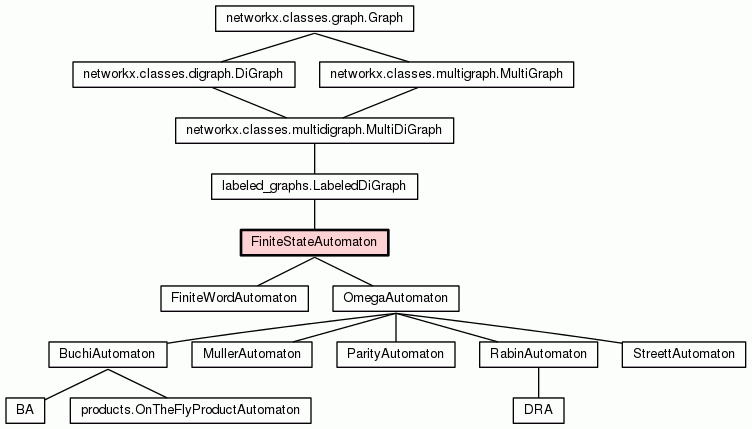
| Home | Trees | Indices | Help |
|
|---|
|
|

Generic automaton.
It has:
subclasses implement is_accepted,
simulate
Automata represent languages in a way suitable for testing if a given trace is a member of the language. So an automaton operates in acceptor mode, i.e., testing input words.
The represented language is not readily accessible, because its generation requires solving a search problem. This search problem is the usual model checking, assuming a transition system with a complete digraph.
For constructively representing a language, use a FiniteTransitionSystem. A transition system operates only in generator mode, producing a language (possibly non-deterministically).
For controllers, use a FiniteStateMachine,
because it maps input words (input port valuations) to outputs (output
port valuations).
NFA, DFA, BA, RabinAutomaton, DRA, StreettAutomaton, MullerAutomaton, ParityAutomaton
| Instance Methods | |||
|
|||
|
|||
|
|||
|
Inherited from Inherited from Inherited from Inherited from Inherited from Inherited from |
|||
| Properties | |
| accepting | |
|
Inherited from Inherited from |
|
| Method Details |
Initialize FiniteStateAutomaton. Additional keyword arguments are passed to LabeledDiGraph.__init__.
|
Return the graph name.
Returns
-------
name : string
The name of the graph.
Examples
--------
>>> G = nx.Graph(name='foo')
>>> str(G)
'foo'
|
Remove state (also referred to as "node"). More than a wrapper since the state is also removed from the accepting set if present.
|
| Property Details |
accepting
|
| Home | Trees | Indices | Help |
|
|---|
| Generated by Epydoc 3.0.1 on Tue May 12 18:21:43 2015 | http://epydoc.sourceforge.net |